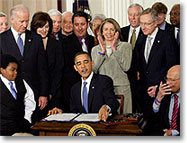
A recent report published by the Organization for Economic Co-Operation and Development (OECD) shows the United States spends more on heath care than any other country. In 2007 U.S. spending was $7290 per capita nearly two-and-a-half times the OECD average of $2984 for other countries says Sarah McIntosh.
Referencing Linda Gorman senior fellow at the Independence Institute in Denver Colorado:
- The current discussion is a mess because it confuses costs (the price of health care) and expenditures (the amount of money spent on health care).
- The United States health care costs may be lower than in Europe but expenditures may be higher simply because people are free to buy more health care than they are in the expenditure-constrained government-controlled European and Canadian systems.
- It is not always easy to get accurate data on health care spending.
The United States compares favorably when real resource measures are used such as physicians nurses hospital beds physician visits and hospital days.
- The higher price tag in the United States is a result of better care. America has less disability better infant mortality rates better cancer survival rates lower population blood pressure and longer life expectancies over 65 than other OECD nations
Also according to Gorman:
- Government regulation in the United States generally increases costs. Health care is probably among the most regulated sectors of the economy.
- Experiments show that giving people the freedom to spend Medicaid personal care budgets free of regulation improves outcomes and reduces expenditures.
The OECD report also suggests the United States and Canada have better cancer care than most other countries raising the question of whether high

quality care can be achieved without higher costs. Devon Herrick a senior fellow with the National Center for Policy Analysis in Dallas Texas says that is unlikely says Sarah McIntosh.
According to Herrick:
- Advanced cancer treatments are costly. If OECD countries believe they can fight cancer without spending more money they are either planning on using older less-effective drugs or they impose price controls that do not compensate drug makers for advanced therapies.
- One policy that might help reduce the cost of new cancer therapies is to streamline the process of Food and Drug Administration approval for new therapies which would bring about increased competition.
Again referencing Gorman; We can improve the system by getting rid of excess regulation which adds about 10 percent a year to our expenditures and reduce spending by better aligning incentives says Sarah McIntosh
Source: Sarah McIntosh
U.S. Tops for Health Care Spending Heartland Institute April 2010.
 A recent report published by the Organization for Economic Co-Operation and Development (OECD) shows the United States spends more on heath care than any other country. In 2007 U.S. spending was $7290 per capita nearly two-and-a-half times the OECD average of $2984 for other countries says Sarah McIntosh.
Referencing Linda Gorman senior fellow at the Independence Institute in Denver Colorado:
A recent report published by the Organization for Economic Co-Operation and Development (OECD) shows the United States spends more on heath care than any other country. In 2007 U.S. spending was $7290 per capita nearly two-and-a-half times the OECD average of $2984 for other countries says Sarah McIntosh.
Referencing Linda Gorman senior fellow at the Independence Institute in Denver Colorado:
 quality care can be achieved without higher costs. Devon Herrick a senior fellow with the National Center for Policy Analysis in Dallas Texas says that is unlikely says Sarah McIntosh.
According to Herrick:
quality care can be achieved without higher costs. Devon Herrick a senior fellow with the National Center for Policy Analysis in Dallas Texas says that is unlikely says Sarah McIntosh.
According to Herrick:























